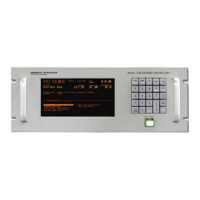Theory
3.0 THEORY
This section provides in-depth information on OPT and Orbit scan, two of the more
advanced features of the 7200 ACS.
3.1 OPT
3.1.1 Orbit Prediction
OPT is the algorithm used by the 7200 ACS to predict the position of a spacecraft
based upon its previous motion. The basic principle proposes that if the
spacecraft's position, velocity, and the forces acting upon it are known, its
position can be predicted at any time in the future.
An "OPT model" is what is referred to in orbital mechanics as an orbital element
set. An orbital element set describes the position and velocity of an orbiting body
at some particular time (the epoch time, or simply, the epoch). OPT's position
predictions are made by taking the orbital element set and using the data it
provides, along with the computed forces acting on the spacecraft, to predict the
position of the spacecraft at the desired time.
The prediction is performed using an algorithm called a propagator. A propagator
takes an orbital element set at some epoch and produces an orbital element set at
a later epoch. OPT uses two different propagators in its operations:
• Two-body propagator: where only the earth's force on the spacecraft is
considered and earth is modeled as a sphere with uniform mass.
• Multibody propagator: where the following effects on the spacecraft are
considered:
- Earth's gravity, including a geopotential model (accounting for the
nonuniformity of the earth's gravitational field).
- Sun's gravity.
- Moon's gravity.
- Solar radiation pressure on the spacecraft.
The two-body propagator is the simplest and fastest, and provides quick solutions
while accounting for the most significant factor affecting the spacecraft's motion.
The more complex multibody propagator provides a more accurate model of the
spacecraft's actual motion.
3-1

